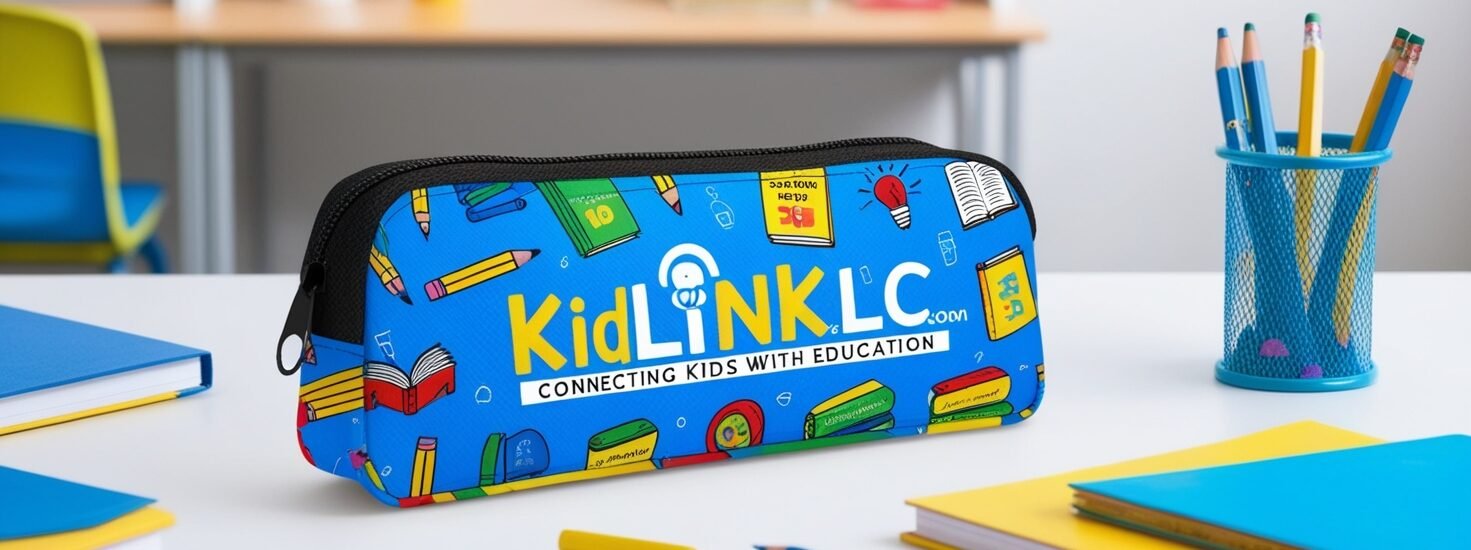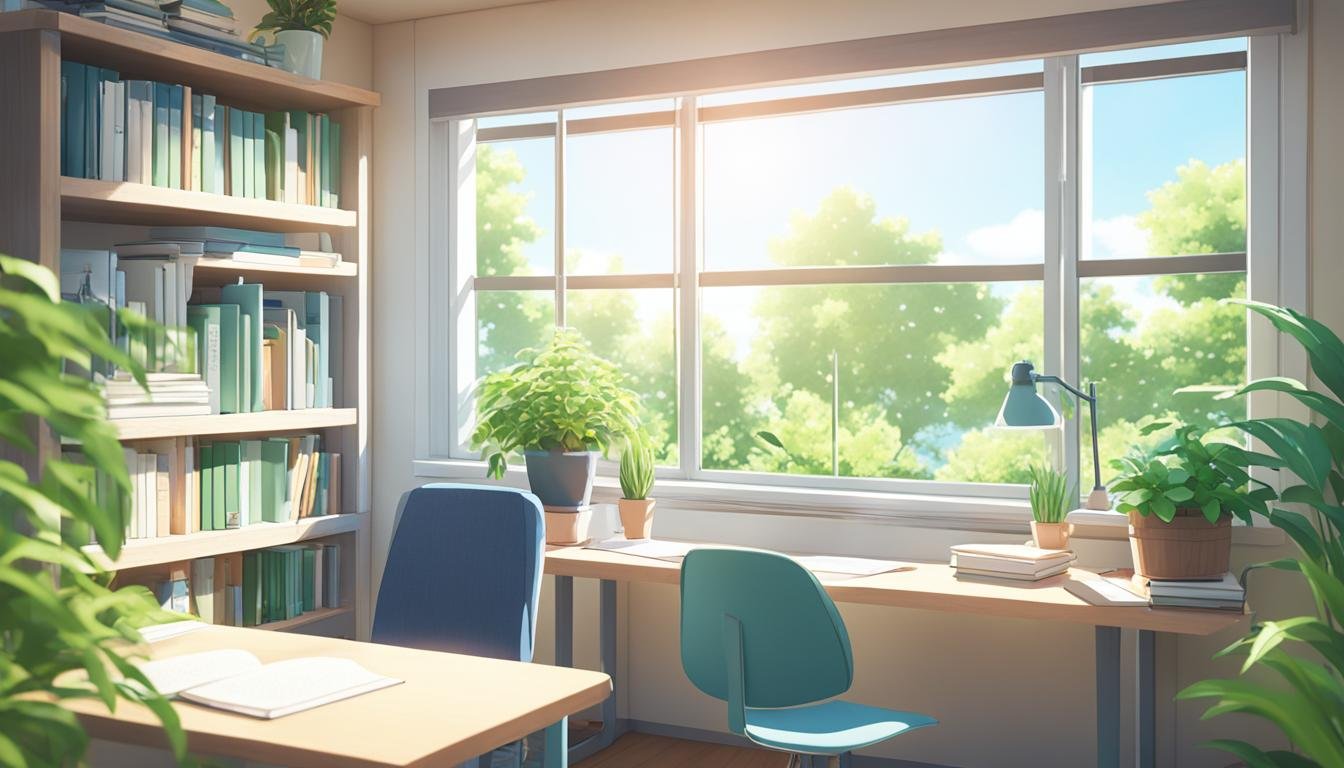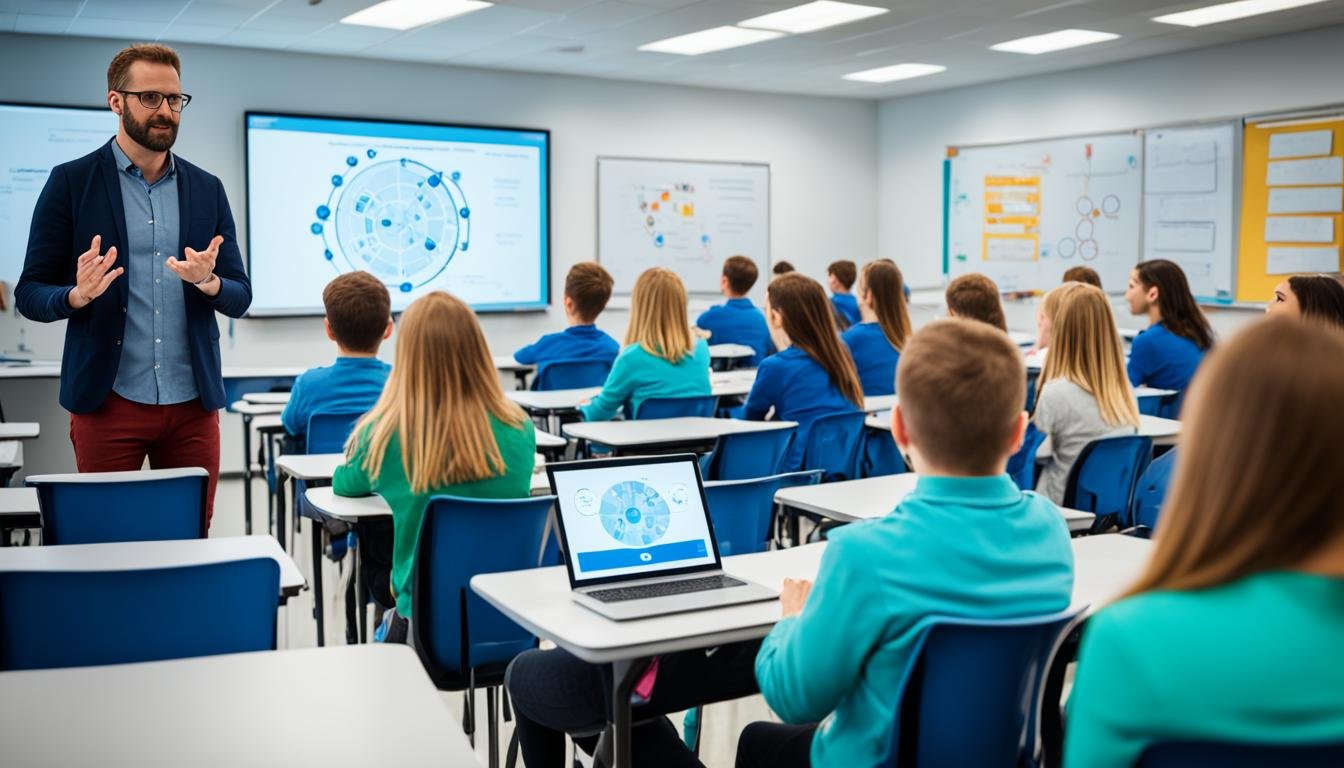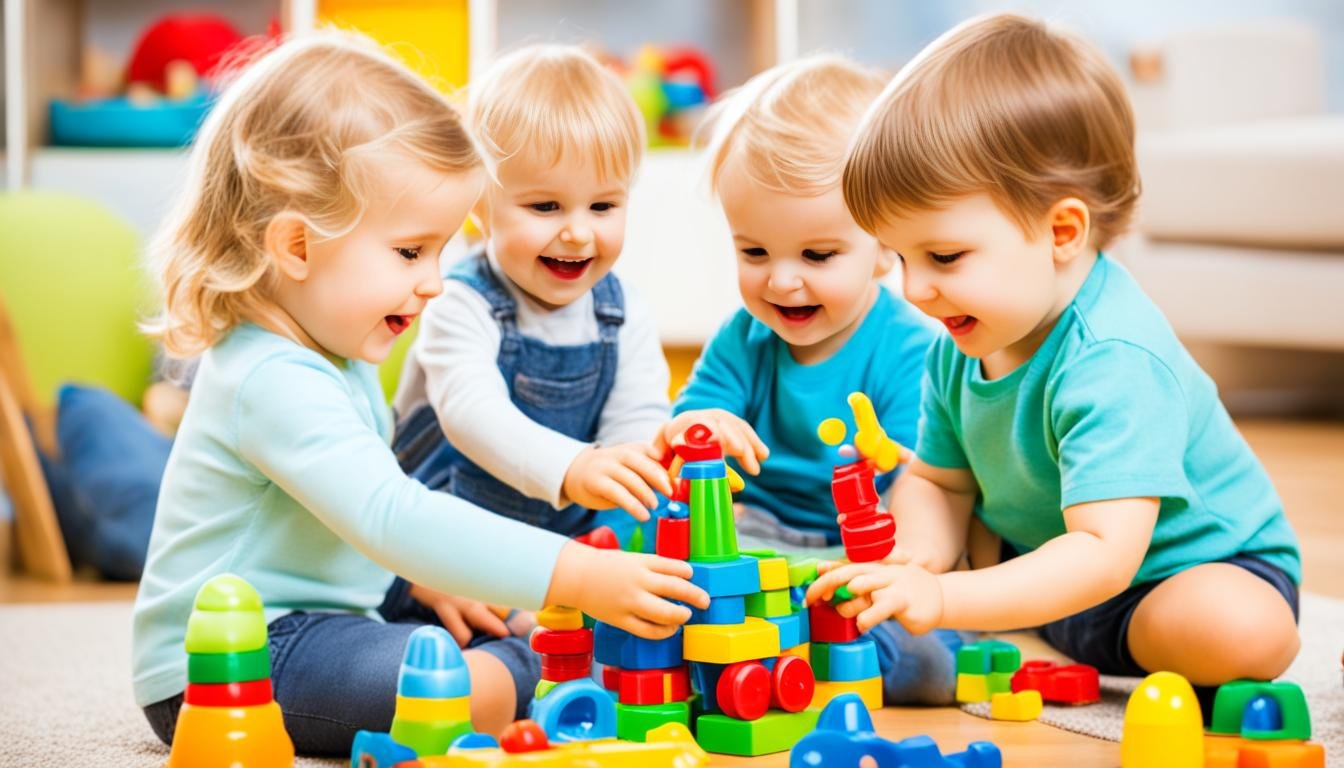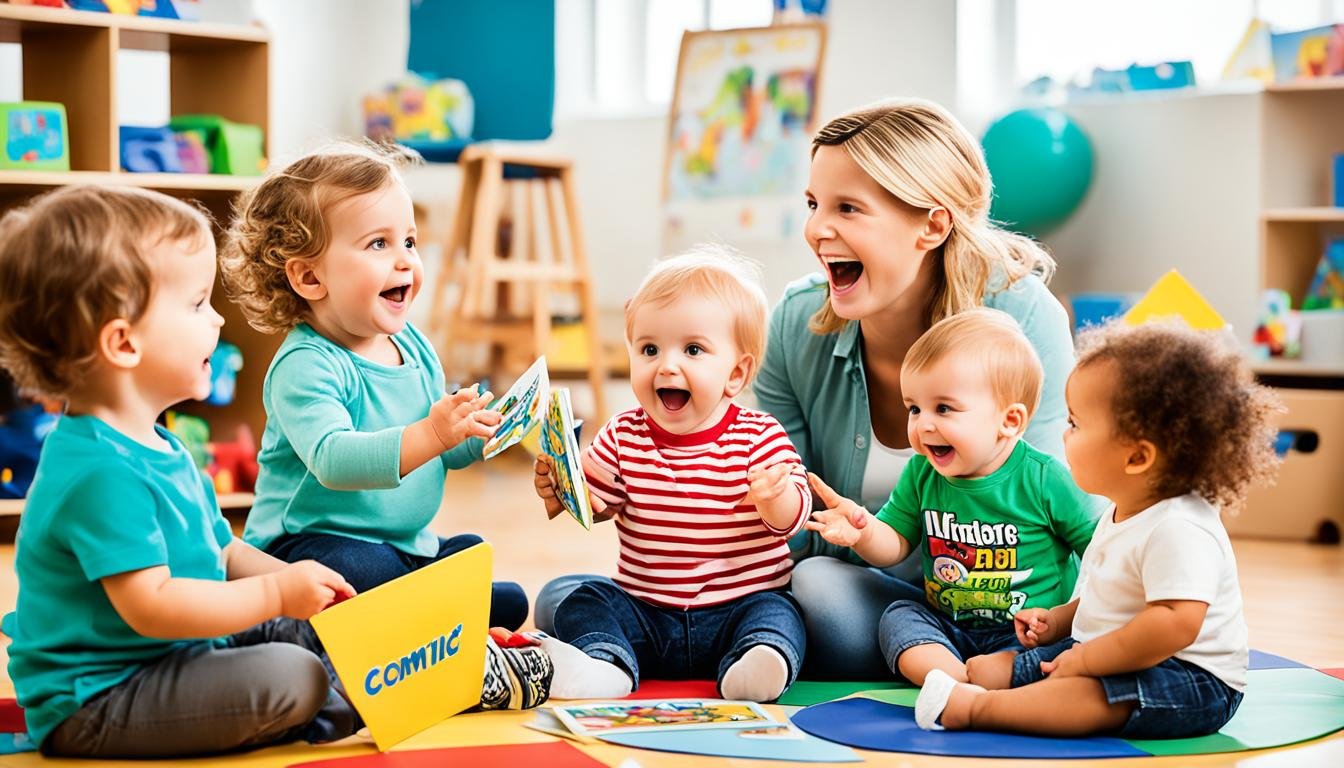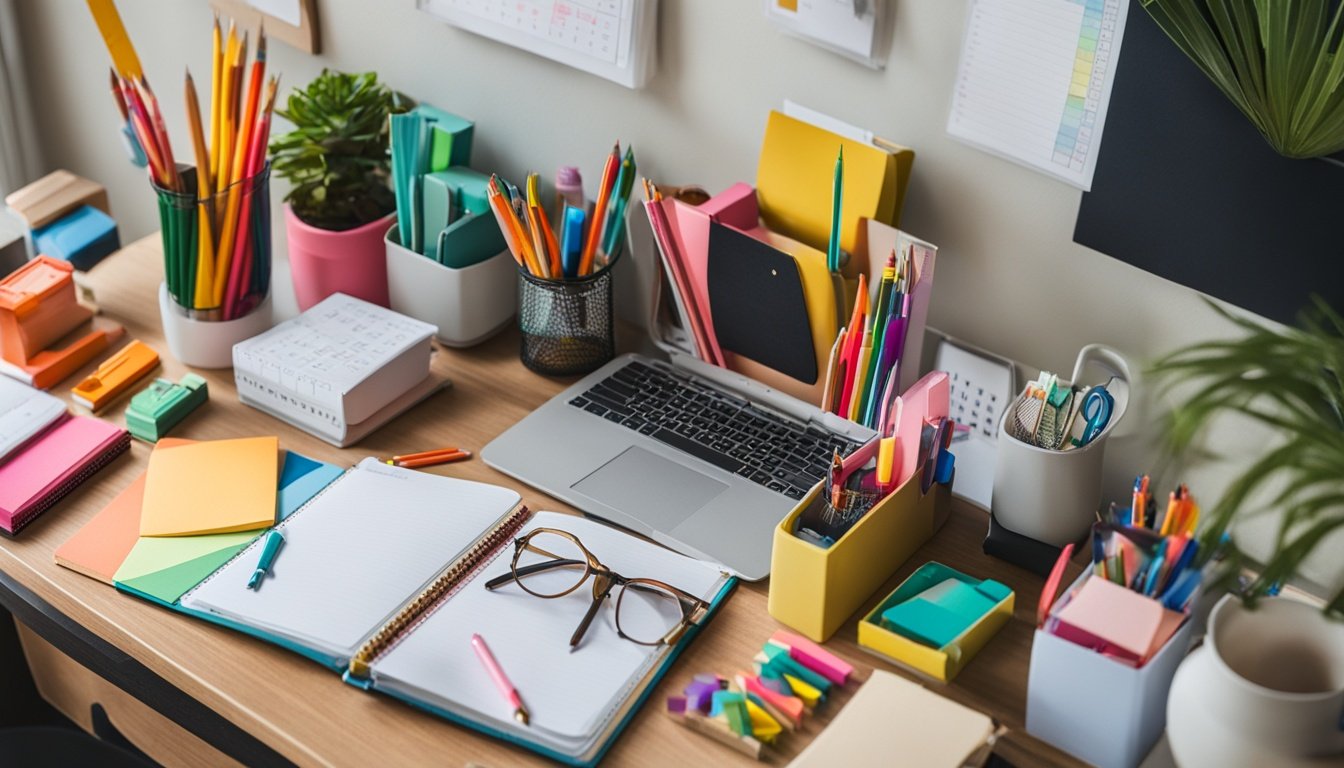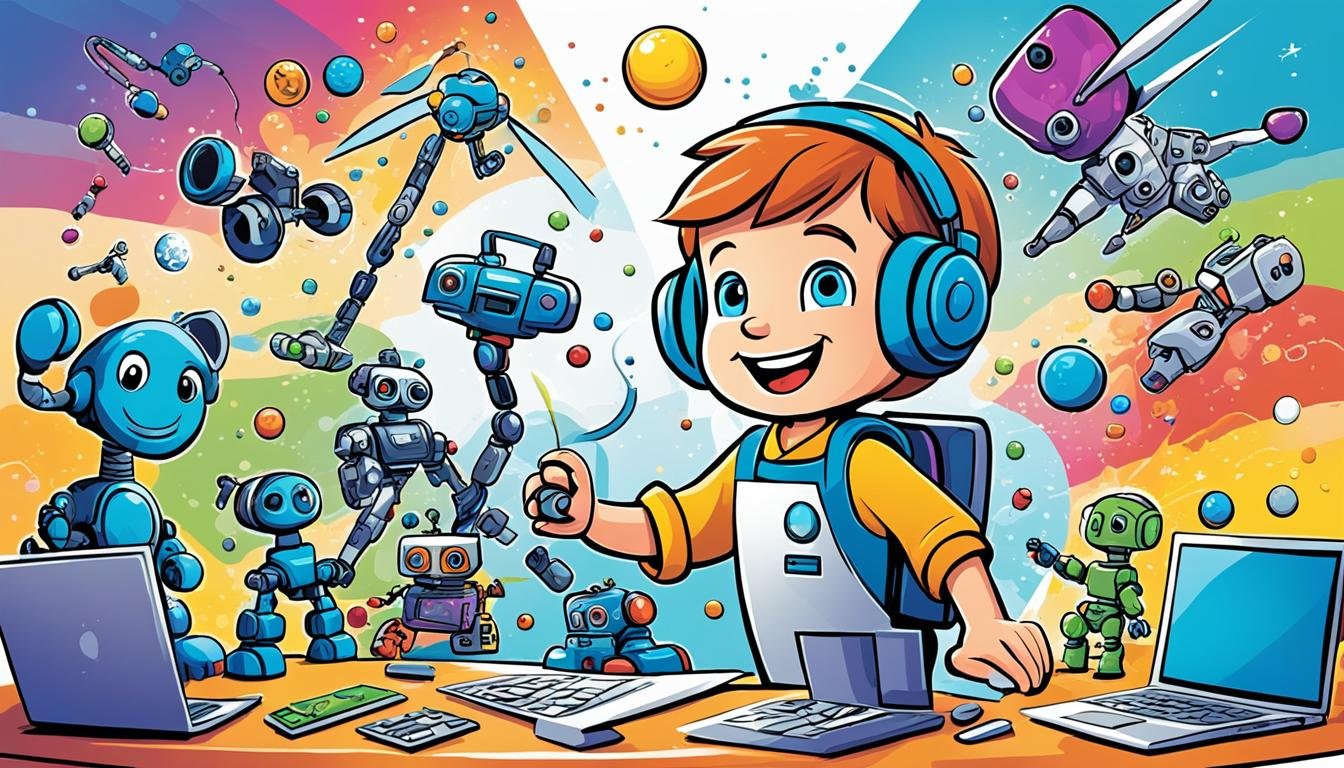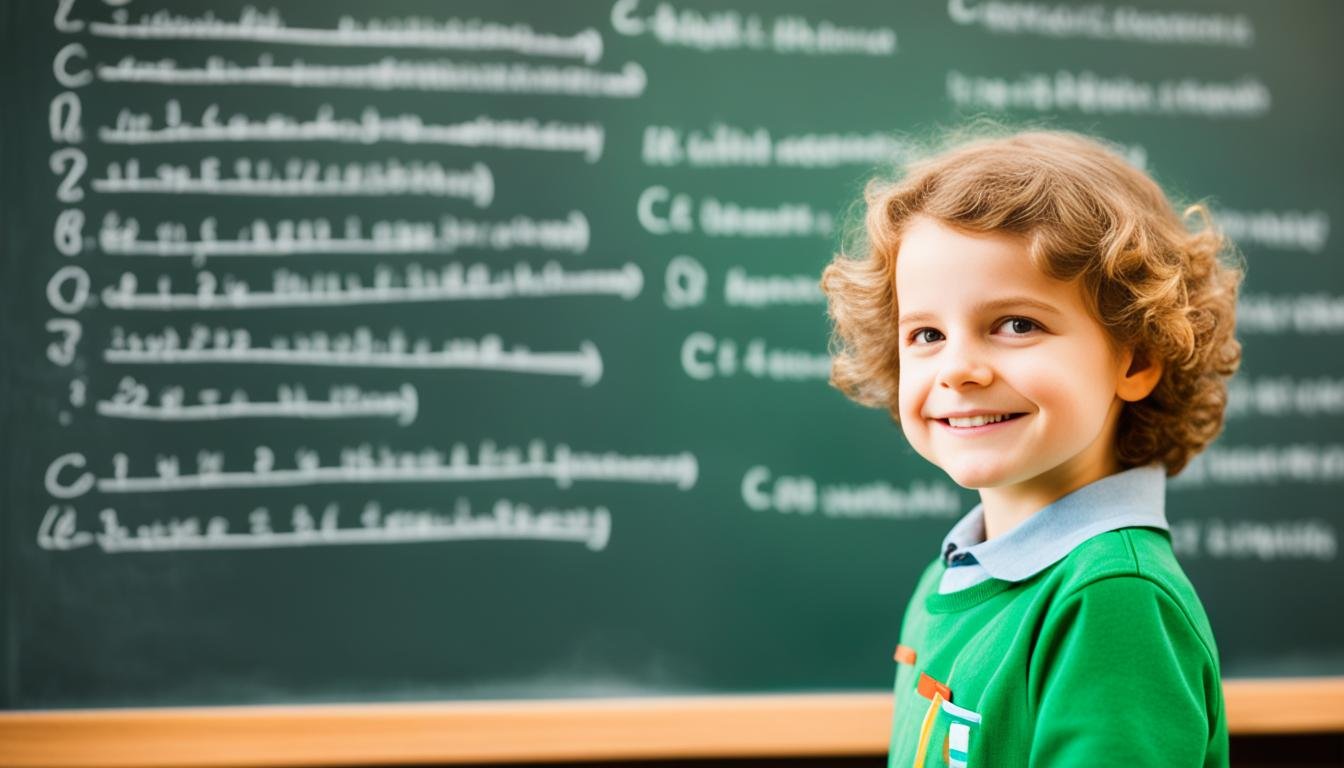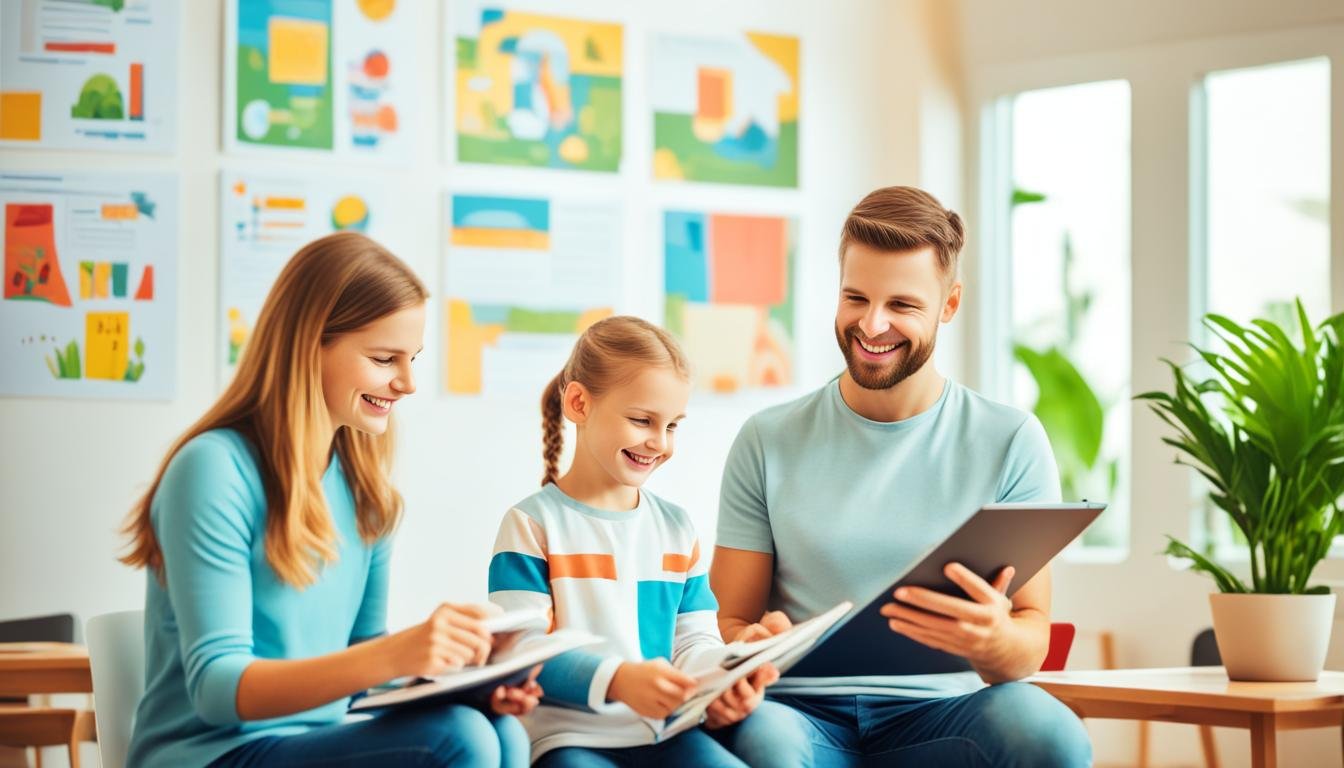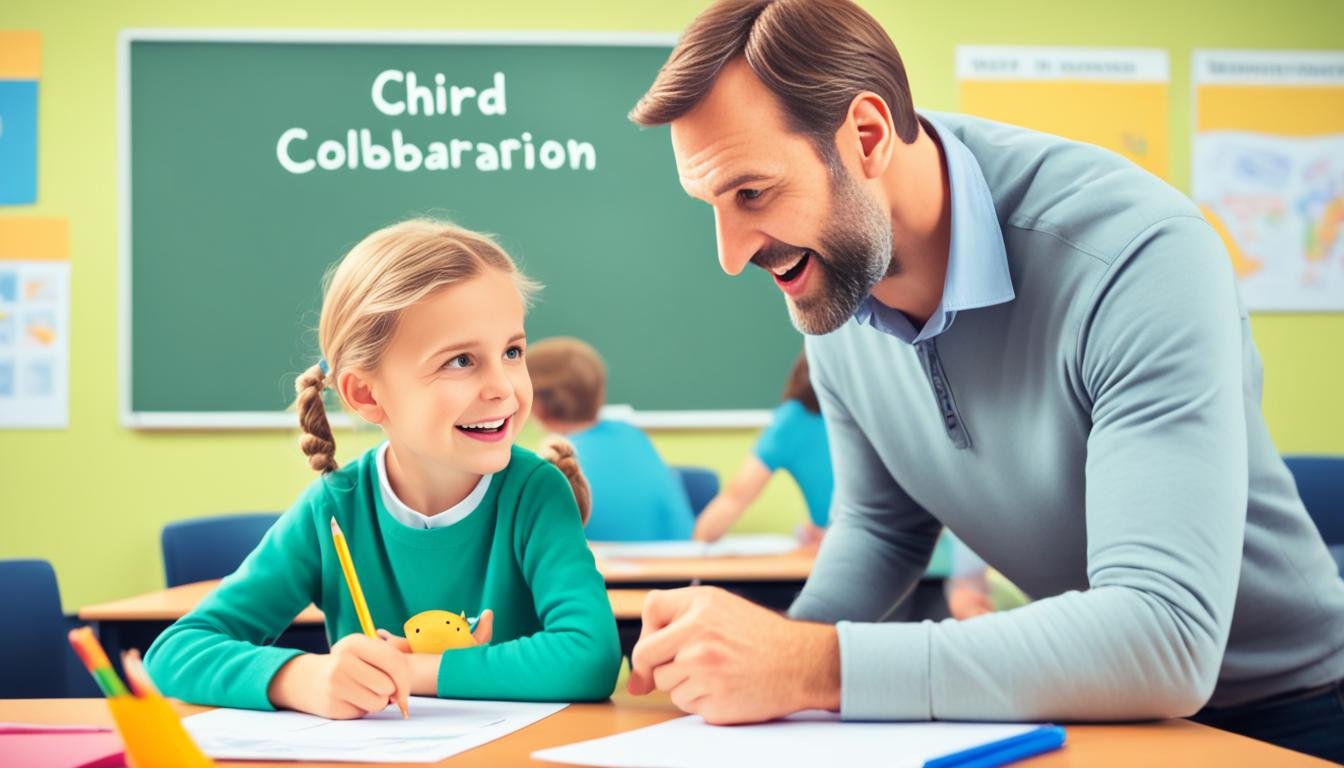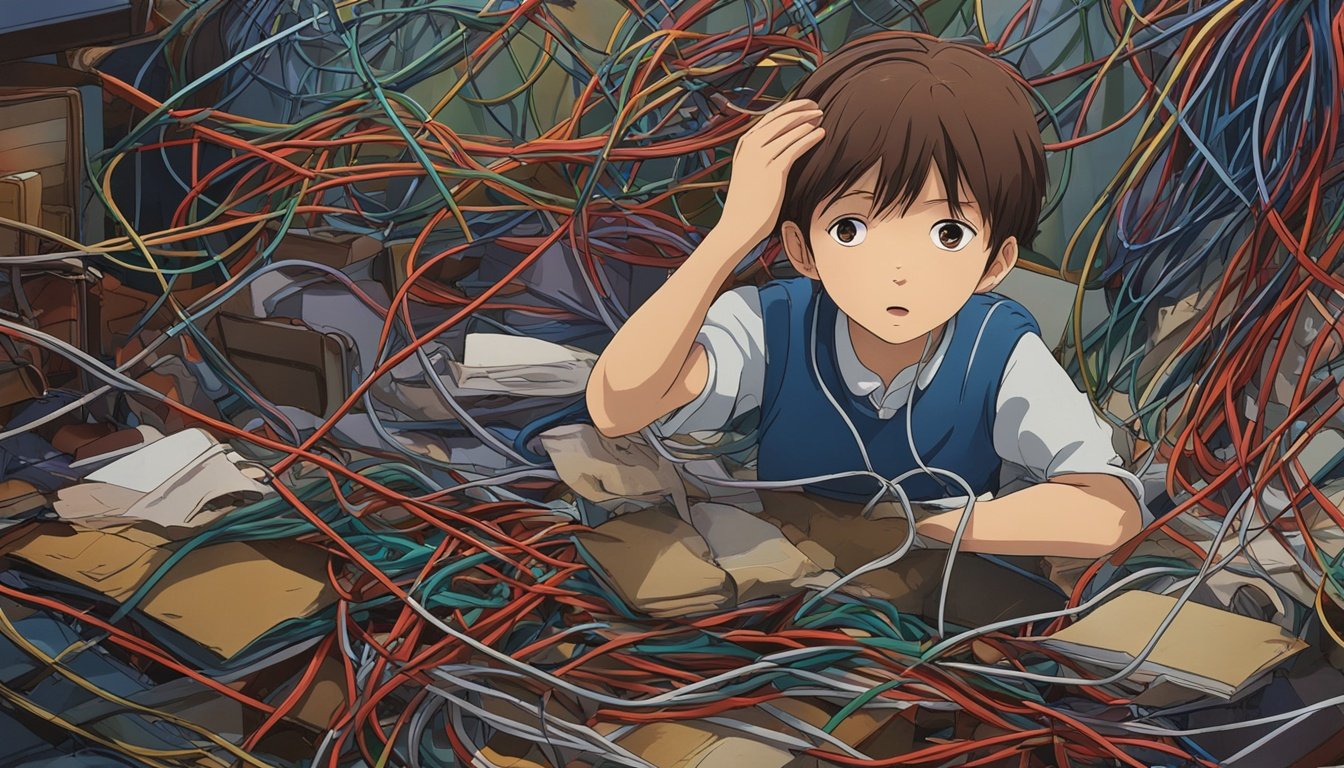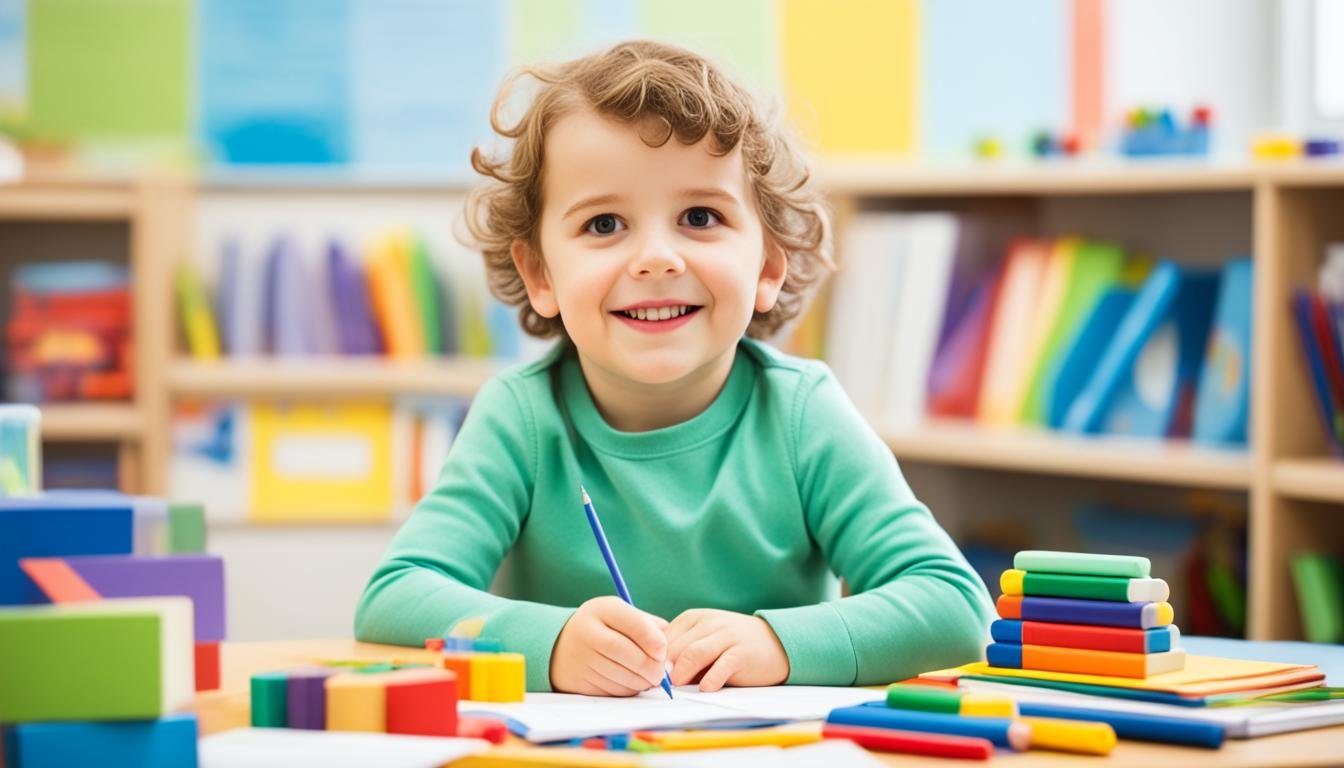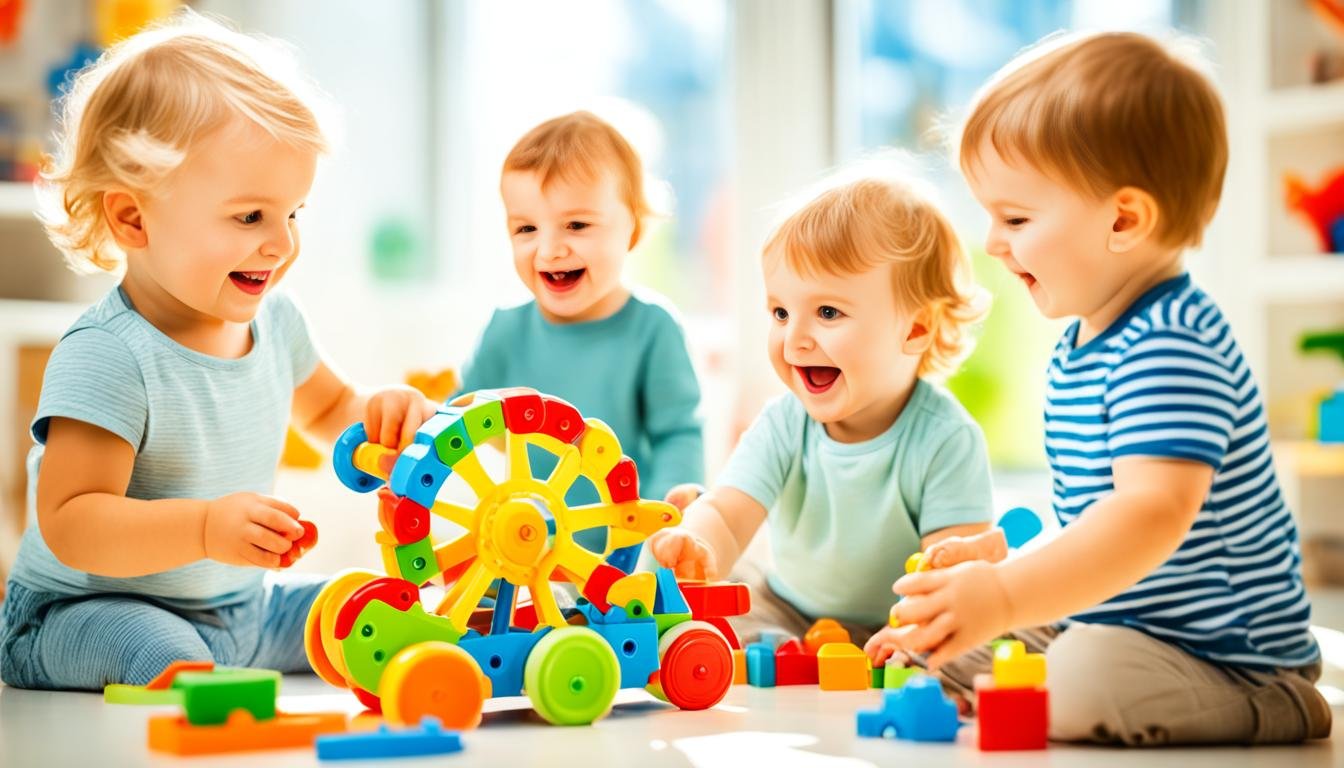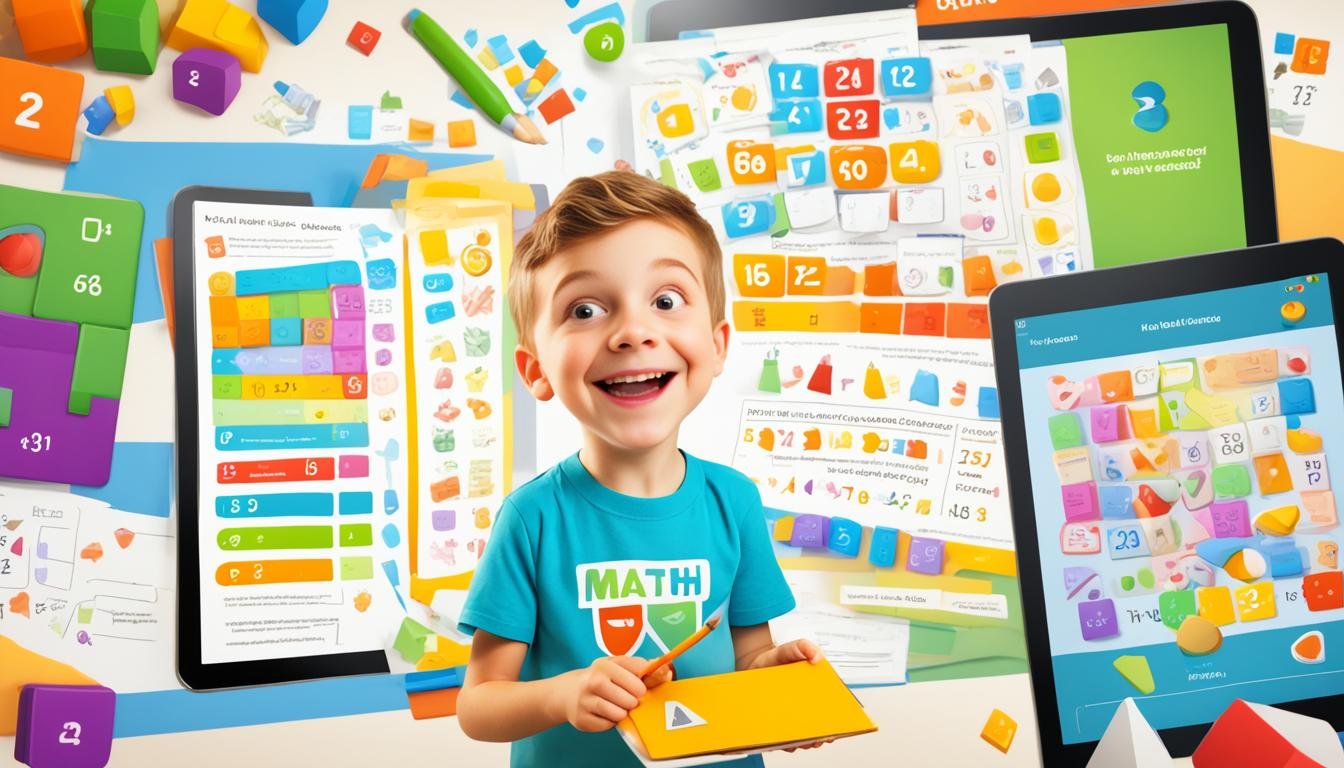Have you ever thought about how our surroundings affect our learning? Starting this journey, we see that the learning space at home greatly impacts our kids’ growth. By making a space that’s both intentional and loving, we help them grow in knowledge, creativity, and resilience.
In our homes, we can make a space that sparks curiosity and builds confidence. Let’s look at the key elements that make our homes great places for our children to learn and grow.
Key Takeaways
- Recognizing the impact of a well-designed learning space on child development.
- Understanding the principles needed to optimize our educational environments.
- Creating spaces that nurture curiosity and creativity.
- Fostering emotional growth and confidence through supportive atmospheres.
- Empowering our children to thrive in their personalized learning settings.
The Importance of a Positive Home Learning Environment
A nurturing home learning environment is key to our children’s growth and success. It’s more than just the physical space. It includes emotional support, predictable routines, and constant encouragement. Knowing how to make a positive learning space helps our kids do their best.
Understanding the Basics of Learning Environment Optimization
Creating a good learning space means knowing what it takes. A calm, tidy area with few distractions helps kids focus and be productive. Simple changes can make a big difference, making them feel motivated and purposeful.
Talking openly with our kids builds a strong bond. They feel important and heard. By using academic success methods, we spark their curiosity and love for learning. This sets the stage for a lifelong love of learning.
Impact on Child Development and Academic Success
Studies show that kids do better in supportive environments. Being close to parents and caregivers boosts their interest and effort in learning. Mixing emotional and educational support helps kids feel confident in school.
By taking part in their learning and using resources like KidLinkLC, we help them grow and thrive. This approach improves their learning and overall happiness.
Choosing the Right Space for Learning
Choosing the right spot for learning at home is key. We need to pick places that have few distractions. This lets our kids focus and dive deep into their studies. It’s about finding quiet spots or tables just for learning.
When kids feel safe and comfy, they learn better. This makes them more into their studies.
Identifying Distraction-Free Zones
Finding places without distractions is important for learning. These spots should be quiet, clean, and free from interruptions. Putting learning stuff in easy reach helps kids concentrate better. Here are some tips for setting up these areas:
- Choose quiet rooms or corners away from busy spots.
- Make sure there’s good lighting to help eyes and mood.
- Keep devices not needed for learning out of sight.
Empowering Your Child to Personalize Their Space
Letting kids make their learning spaces their own boosts creativity and ownership. This makes learning more fun. Here are ways they can personalize their area:
- Let them pick how their desk looks or what colors to use.
- Let them show off their art or achievements.
- Add things that show what they like.
Using these strategies helps create a place that’s not just for learning. It’s where they can really get into learning and love it.

| Area | Features | Benefits |
|---|---|---|
| Quiet Corner | Minimal noise, comfortable seating | Enhanced focus and fewer distractions |
| Dedicated Desk | Organized materials, good lighting | Promotes a sense of responsibility and independence |
| Creative Space | Art supplies, motivational quotes | Encourages creativity and self-expression |
Creating a Structured Learning Routine
As caregivers and educators, setting up structured learning routines is key to our children’s growth. These routines create a productive learning space. They give our children a predictable and secure feeling. By setting daily rhythms, they learn the flow of learning, making it smoother and more fun.
Benefits of Routines for Children
Routines have many benefits that show up over time. They help reduce anxiety and teach discipline. By sticking to a schedule, our children do better in school. These routines help them manage their energy for learning, not getting caught off guard by changes.
This approach boosts their emotional health and school performance. We see big improvements in how they feel and do in school.
Incorporating Break Times in Daily Schedules
Adding break times to our schedules is a smart move for learning. These breaks refresh minds and boost productivity. They keep our children’s spirits high.
We can use these breaks to spark creativity and mindfulness, making learning richer. Working with our children to make schedules with breaks helps them stay engaged and do better. Resources like creating structured classroom environments show how important this is for their learning.
Organizing Learning Materials Effectively
Improving our educational spaces is key to our children’s success. By organizing learning materials well, we help them become independent. This makes learning easier and more fun.
When everything is in its place, kids feel more responsible and in charge. This is crucial for their growth.
Creating an Accessible Learning Space for Independence
We aim to make a space where all tools and resources are easily found. Using classroom organization techniques, we make sure everything is easy to reach. This helps kids find what they need quickly and boosts their confidence.
Things like labeled containers, colorful shelves, and inviting trays make learning fun. They encourage creativity and curiosity.
Methods for Keeping Educational Tools Organized
Using effective organization methods makes learning better. Color-coded bins help kids find their materials fast. A weekly check schedule keeps things tidy.
Visual aids like charts and diagrams help kids know where things go. With careful planning, our learning spaces become places of discovery and growth.

Creating Emotional Support within the Learning Environment
To make a supportive learning space, we must see how love and respect change education. By giving emotional support, we make a safe place for kids to do well in school and life. This way, we focus on each child’s feelings and views.
The Role of Love and Respect in Education
Love and respect help us build trust with our students. This trust is key as they learn and grow. They feel free to explore their subjects, share their thoughts, and ask for help when they need it. Feeling supported helps them face challenges with confidence.
Encouraging Open Communication with Your Child
Talking openly is key to our supportive classroom. By really listening to our kids, we let them share their feelings without fear. Regular chats and talking about their day can make our bond stronger. This approach helps us understand them better and teaches them to express their feelings.
For more tips on building this supportive space, check out creating social-emotional learning environments.
Encouraging Reading and Literacy
Books have a powerful effect on young minds. They help grow reading skills and open up new worlds. Reading different books makes vocabulary richer, imagination stronger, and understanding better.
Providing Access to a Variety of Reading Materials
Creating a home library sparks a lifelong love for reading. It makes reading a fun adventure with interactive learning activities. Fiction and non-fiction books help kids learn about different cultures and ideas.
Storytime events and local libraries introduce kids to many stories and views. This helps them see the world from different angles.
Setting Up a Family Reading Routine
Reading together brings families closer. Simple activities like nightly stories or weekend reading become special traditions. These moments boost literacy and create a loving space for kids.
Sharing stories builds a deep love for reading. It goes beyond the book, making family bonds stronger through stories.

Reading together makes it exciting for kids. It’s not just a task. We can learn more about creating literacy-rich homes at literacy-rich environments. Also, check out user privacy policies for tips on keeping kids safe online.
Creating Special Learning Spots
We can turn our homes into places full of creativity and discovery. By setting up special areas for different activities, we make learning fun and interactive. Each spot is designed to meet the unique needs and interests of our kids.
Defining Unique Areas for Different Learning Activities
Setting aside spaces for specific activities helps kids focus and explore on purpose. Here are some ideas for these special spots:
- Reading Nook: A cozy corner with pillows, bookshelves, and warm lighting fosters a love for reading.
- Art Station: A creative hub stocked with art supplies allows children to express themselves freely.
- Science Corner: Equipped with tools for experiments and natural curiosities, this space sparks scientific inquiry.
- Outdoor Learning Zone: Connecting with nature offers an engaging backdrop for hands-on learning.
Design Ideas for Functional Learning Spaces
The look and feel of a learning space are key to keeping kids engaged. Here are some design tips to make learning better:
| Design Element | Purpose | Impact on Learning |
|---|---|---|
| Comfortable Seating | Encourages prolonged engagement | Enhances focus and reduces fatigue |
| Bright Colors | Inspires creativity and excitement | Stimulates curiosity and motivation |
| Interactive Tools | Facilitates hands-on learning | Promotes active participation |
| Flexible Space Arrangement | Allows for adaptability and creativity | Encourages exploration and initiative |
Fostering Independence and Responsibility
In our journey to make learning focused on the student, we see how important it is to grow independence and responsibility. By helping our kids learn to rely on themselves, we teach them to see what they can do. We also show them how important it is to be accountable.
The Importance of Age-Appropriate Responsibilities
Giving our kids tasks that fit their age turns these into chances to learn. This way, they get involved and learn key independence strategies. By letting them handle simple chores or homework, we help them grow. We guide them towards being able to do things on their own.
Teaching Your Child to Manage Their Learning
Helping our kids manage their learning makes their education better. We encourage them to set goals, keep track of their progress, and think about their successes. This teaches them to own their learning. As they do this, they learn to face challenges, adjust to new situations, and do well in school.
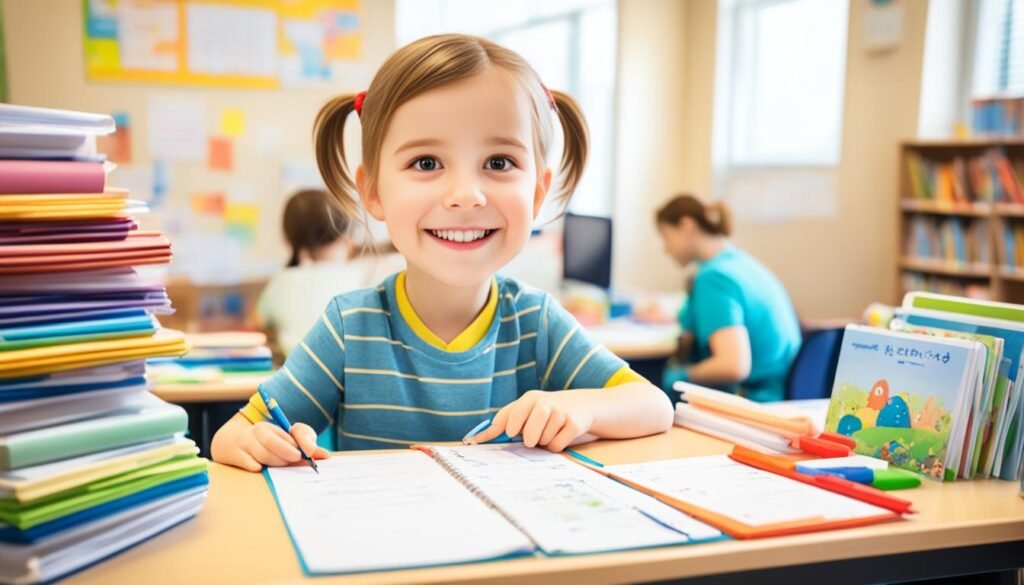
Incorporating Technology in the Learning Space
Technology is changing how our kids learn. It brings new ways to understand and interact with their lessons. This shift opens up new doors for them to be more engaged and curious.
Tools for Enhancing Digital Learning Experiences
Choosing the right tools can make digital learning more exciting. There are many apps, platforms, and software that connect students to a world of knowledge. These tools turn old-school teaching into something new and exciting, where every click opens up new discoveries. Here are some key tools:
- Interactive learning apps to promote comprehension
- Online collaboration tools for peer interaction
- Virtual reality experiences to immerse learners in diverse subjects
Ensuring a Safe and Productive Online Environment
The digital world is vast and requires a safe space for our kids to explore. Setting rules for online behavior helps them use technology wisely. By creating a safe online space, we set the stage for effective learning. Important steps include:
- Setting time limits on screen usage to encourage balance
- Monitoring online activities to ensure safety
- Promoting discussions about internet etiquette and awareness
How to Create an Effective Learning Environment at Home for Your Child
To start making a great learning space at home, we need to think about what our kids like. By making these spaces our own, kids feel more connected to their learning. We can watch and learn what they like, making teaching methods better for them.
Strategies for Success in Home Learning
Creating a learning space means using smart strategies. Setting clear goals helps kids stay motivated. Mixing old and new learning tools helps kids learn in the best way. A friendly space makes kids want to explore and learn more, helping them do well.
Tailoring the Environment to Your Child’s Needs
Every kid learns differently. Making a space that shows who they are helps them want to learn more. Small changes can make a big difference, like organizing things better or making cozy spots for reading. Changing the space to fit our kids helps them do well in school and feel good about themselves. For more tips, check out how to make a positive learning.
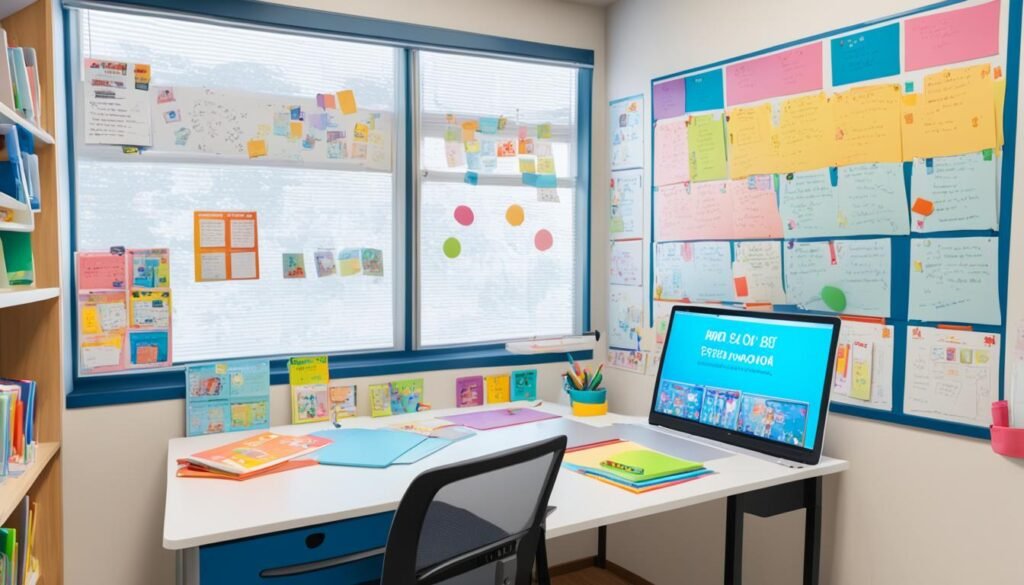
| Strategy | Description | Benefits |
|---|---|---|
| Set Learning Goals | Establish clear, achievable objectives. | Focuses efforts and encourages self-management. |
| Personalize the Space | Tailor the environment to your child’s interests. | Enhances engagement and ownership. |
| Blend Learning Resources | Combine digital tools with traditional materials. | Promotes varied teaching methods for better comprehension. |
Building a Collaborative Learning Atmosphere
We start our educational journey with our families, making a vibrant learning space for our kids. By bringing families into the learning process, we tap into their knowledge and skills. This creates a supportive and dynamic change in education.
Involving Family Members in the Learning Process
Family involvement is key to connecting with and supporting our kids’ education. When we join in activities like reading, science projects, or art, we make learning richer. This not only helps our kids learn better but also strengthens family bonds.
Sharing Knowledge and Skills Within the Family
Sharing our talents and knowledge enriches our learning environment. Every family member brings something special to the table. Through stories, games, and more, we show that learning is a fun, shared adventure. It teaches us that education is a journey we take together.
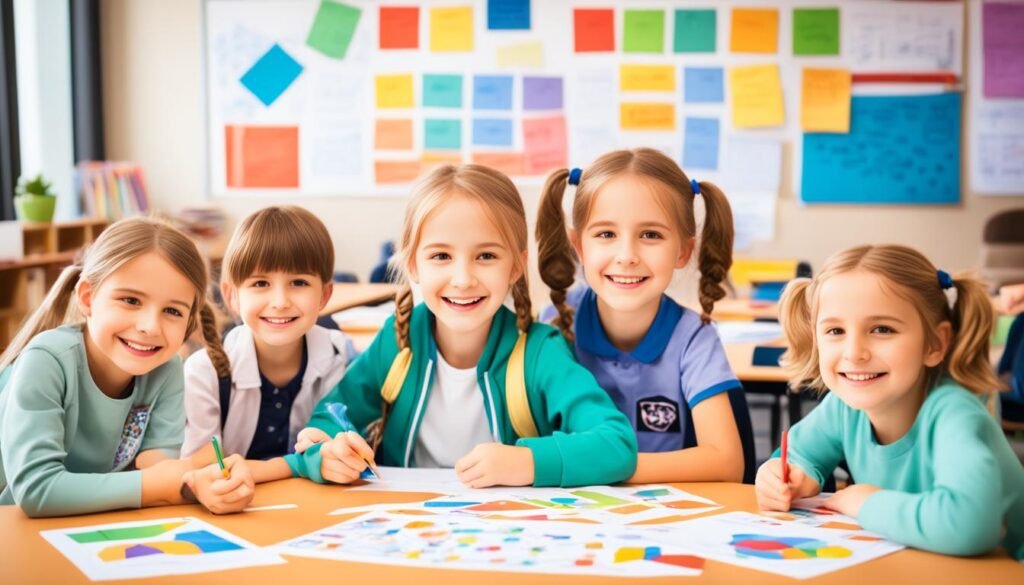
Monitoring and Adjusting the Learning Environment
We know that keeping an eye on the learning environment is key. It’s all about finding the right balance. Knowing how our kids feel helps us spot when things need to change.
Recognizing Signs of Discontent or Difficulty
We watch closely when our kids start to lose interest or get upset. Changes in their behavior tell us it’s time to make things better. By talking openly, we learn what’s hard for them. Then, we can use the best teaching methods to make learning easier and more fun.
Making Necessary Tweaks for Improvement
We must listen to our kids and make changes when needed. Small things like rearranging the room or adding new materials can really help. Our goal is to make learning better by changing how we teach and work together. This way, every child can do their best in a supportive environment. For more tips on creating a positive classroom, check outeducational best practices.
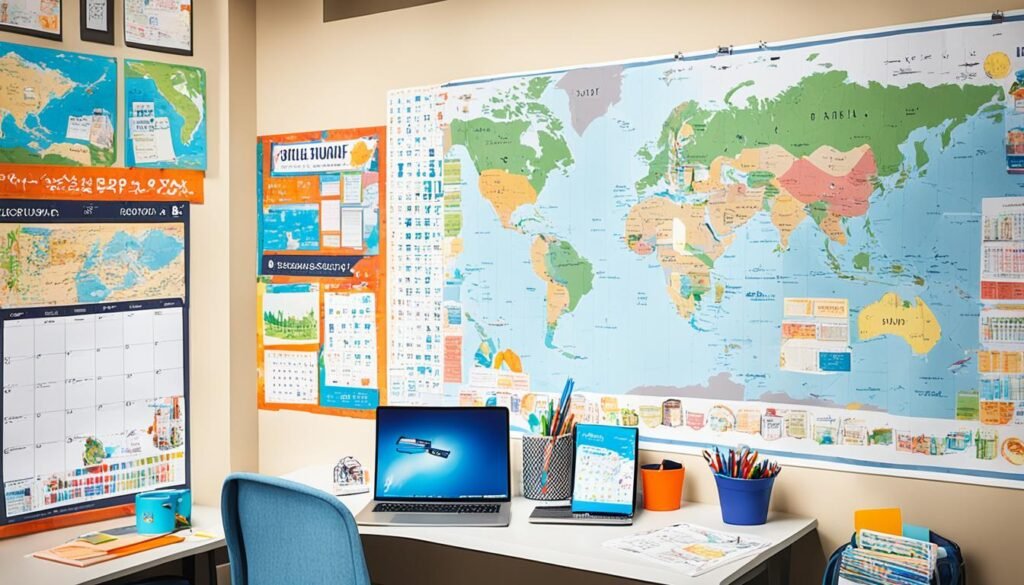
| Signs of Discontent | Potential Adjustments |
|---|---|
| Lack of motivation | Incorporate more interactive materials |
| Increased frustration | Introduce a more structured routine |
| Difficulty in focusing | Designate a distraction-free space |
| Withdrawal from participation | Encourage peer collaboration |
Conclusion
Creating a great learning environment is a journey that never stops. It’s about giving emotional support, having clear routines, and keeping spaces tidy. These things together make a positive place for learning.
By making learning fun, we give our kids the confidence and skills they need to do well. Working with families and customizing our methods helps build strong foundations for growth in school and life.
We aim to make our children succeed by making a supportive space for learning. Let’s use advice from experts, like those found here. With teamwork, our kids will love learning and face the future ready.
FAQ
How can we create an effective learning environment at home for our child?
What is the significance of a positive home learning environment?
How should we choose the right space for our child’s learning?
What are the benefits of creating a structured learning routine?
How can we effectively organize learning materials?
What role does emotional support play in our child’s learning environment?
How can we encourage a love for reading and literacy?
What is the importance of creating special learning spots?
How can we foster independence and responsibility in our children?
How can we incorporate technology into our child’s learning space?
What strategies can we use to tailor the learning environment to our child’s needs?
How can we build a collaborative learning atmosphere at home?
What should we monitor to ensure the learning environment remains effective?
Source Links
- https://www.dpi.nc.gov/rethink-education-how-create-home-learning-environment-guide/download?attachment
- https://www.edsembli.com/8-tips-on-how-to-create-a-positive-learning-environment-at-home/
- https://www.idra.org/resource-center/parents-as-first-teachers-creating-an-enriched-home-learning-environment/
